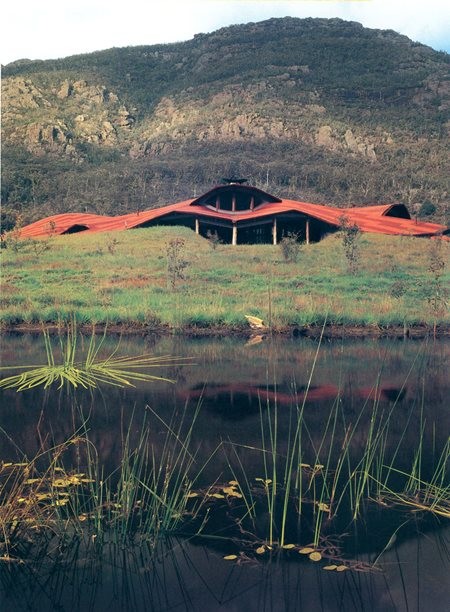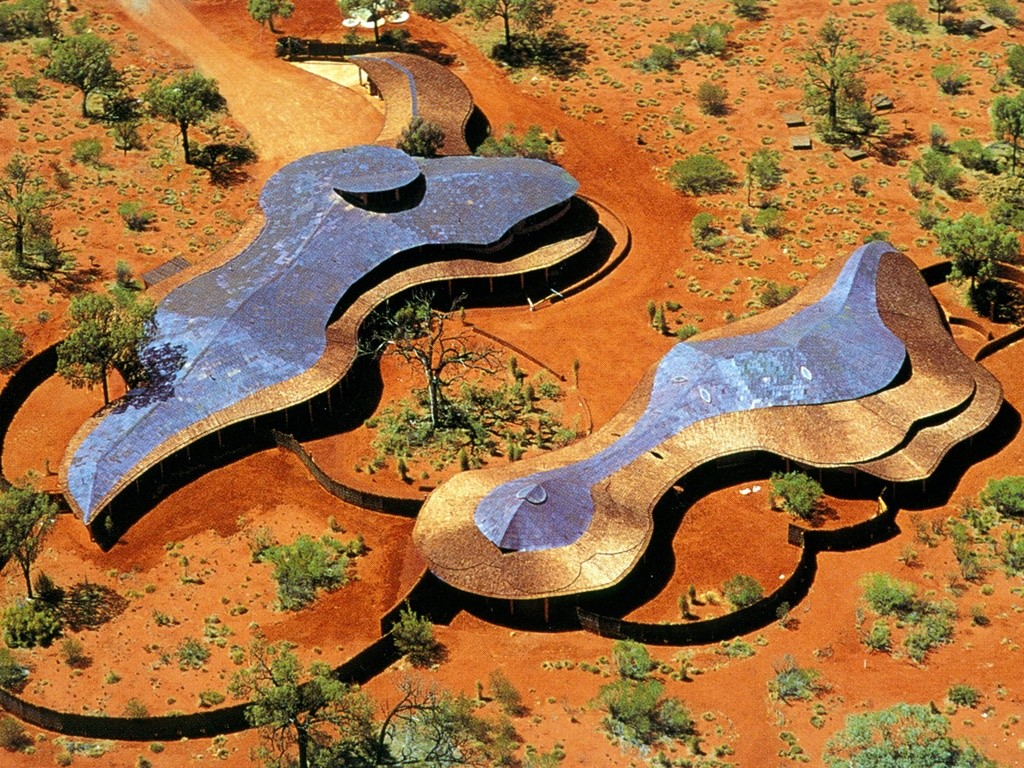Jefa Greenaway is director of Greenaway Architects and one of Victoria’s few Indigenous Australian architects.
Architecture & Design spoke with Greenaway to better understand why there are so few registered Indigenous architects in Australia and why he believes this shouldn’t be the case.
Why are there so few Indigenous architects in Australia?
This is indeed a perplexing question. I’ve ruminated about this for many years and tend to believe that many Indigenous and non-Indigenous people alike do not fully appreciate the value of what architecture can bring, whether it be for an individual and organisation or a community.
The frame of reference of how ideas, expressions of identity and connectedness to culture can be facilitated through design is not particularly broad. Further, the academic hurdles, limited role models and high enter scores can be seen as providing real impediments.
Finally, the act of building has, in the past, been a mechanism of control or dispossession and may still subconsciously be seen as less valued or optimistic a creative endeavour compared with other art forms (for which Indigenous Australians so often excel).

Jefa Greenaway describes the work of Gregory Burgess Architects as respectful, considered and a collaborative experience of mutual listening. Pictured here is the Brambuk Cultural Centre. Photographer: Trevor Mein
Is ‘architecture’ too esoteric and disconnected from the needs and values of indigenous communities?
Architecture can at time be viewed as a little elitist, not always accessible and consequently lead to a disconnect. Its true value therefore is often missed. Personally I see architecture, in its purest form, as simply creative problem solving, utilising design as its primary means. The value proposition needs to be further prosecuted, and demonstrated as having real tangible benefits to the needs and aspirations of community.
The symbolic meaning and power and potential longevity of architecture offers plenty. The case needs to be made and reinforced that the spirit of place can be amplified, that deficit positions can be overturned and that culture can be readily strengthened through considered responses to the built environment.

How has Australia designed for Indigenous cultures historically, and how is this changing?
There have been wonderful examples of considered and responsive designs for and with Indigenous communities. Up until the last 20 years or so, this has been undertaken by non-Indigenous architects, as there were simply no, or very few, qualified Indigenous practitioners. This is now changing, as an active, articulated and talented number of Aboriginal and Torres Strait Islander design leaders are contributing to reshaping the way in which projects are realised for, with and by Indigenous communities.
There are still many poor examples and repeated short comings with Indigenous housing for example, in regional, remote and even urbanised locations. The key for me is the necessity of ensuring a meaningful sense of collaboration, consultation and participation. The process is critical to facilitating a sense of embrace and real connectedness or ownership. A committed partnership is the only way optimum solutions can be realised.
Gone are the days of hanging a boomerang on the wall, a dot painting in the lobby or re-badging a building in an Aboriginal name, and thinking this is necessarily going to cut it. Indigenous communities are demanding more and are expecting not more of the same, but new modes of thinking.

The Koorie Heritage Trust (image: Trevor Mein) and High Country Visitor Centre (image: Ben Wrigley) by Gregory Burgess Architects.
What does ‘Indigenous placemaking’ mean and how can it fit in with current practices in Australian architecture?
I see Indigenous placemaking as a multi-facetted approach, which is more than simply architecture. The notion of plonking a building on site is far too simplistic and cannot be separated or isolated from the importance of siting, the value of landscape and the value of internal space. A holistic approach, rather than a silo approach is at the core of this notion.
Of equal value and centrality is placing people first. This presupposes an understanding of place, of which Country a project is located, of how layers or history and meaning can be acknowledged and to whom one should talk with to authorise what is sought by the community, in which a project seeks to represent. And there is indeed capacity for cross over with such ideals within the broader practice of architecture in Australia. Think of the potential to appropriately and with sensitivity reference the depth of history that this country too often conceals. We really have the tools to give voice to many compelling narratives that our rich culture holds.

Uluru Kata-Tjuta Cultural Centre (image: Craig Lamotte) by Gregory Burgess Architects.
How can a culture be appropriately represented through fixed built form when it is predicated on change, evolving and a “lived culture”?
Indigenous culture is neither fixed in time nor static in its evolution. It should really be seen in the light of representing the past, the present and the future. The culture is ever evolving, as are its people. Therefore it is only right that this more nuanced understanding is acknowledged.
The most evocative forms of architecture have an ability to enable multiple readings and when done well embed a subtle yet sophisticated approach to all the competing forces that inform the design outcome.

The ability to ever definitively fix meaning to architecture is ever elusive, however where the architect utilises their skills to interpret, to facilitate and to infuse the wishes of the client in innovative ways and ensure a sense of deep listening - opportunities for success are very much amplified.
There is however a need to be careful in appropriating symbols or totems without due care, while respecting cultural protocols is particularly important. This coupled with a two-way exchange can also avoid the pit falls of resorting to clichéd, stereotypical or patronising references. This considered approach can also begin to acknowledge the rich tapestry that is Indigenous Australia, without presuming that its culture is in some way homogenous.
How can attention to Indigenous perspectives aid and benefit the built environment in Australia?
 Indigenous people have been custodians of this land for millennia. It is with knowledge, ecologically responsiveness and care that has groomed the landscape to the benefit of its First peoples. There is much know-how and sensitivities that can be learnt.
Indigenous people have been custodians of this land for millennia. It is with knowledge, ecologically responsiveness and care that has groomed the landscape to the benefit of its First peoples. There is much know-how and sensitivities that can be learnt.
The ‘scar tree’ (left) is the perfect metaphor to demonstrate that one can harvest the value of the landscape around us, but do it in a manner that the environment is not erased in the process. One can utilise that which is needed, while safeguarding the needs of future generations. This sustainable ethos is not an afterthought, nor is it an add-on.
The other realm which can further enhance the built environment is the largely lost skill of ‘reading the landscape’. The ability to evoke the landscape context and to be able interpret that which is consistent with the spirit of place, by way of understanding it better – ie. knowing the direction of prevailing winds, knowing how to best capture the natural attributes in passive ways or of working with rather than against the place, these aspects have the capacity to be further embraced. This coupled with an honesty and frugalness of means and expression can come some way to ensure a simple sense of connectedness to this ancient continent.

